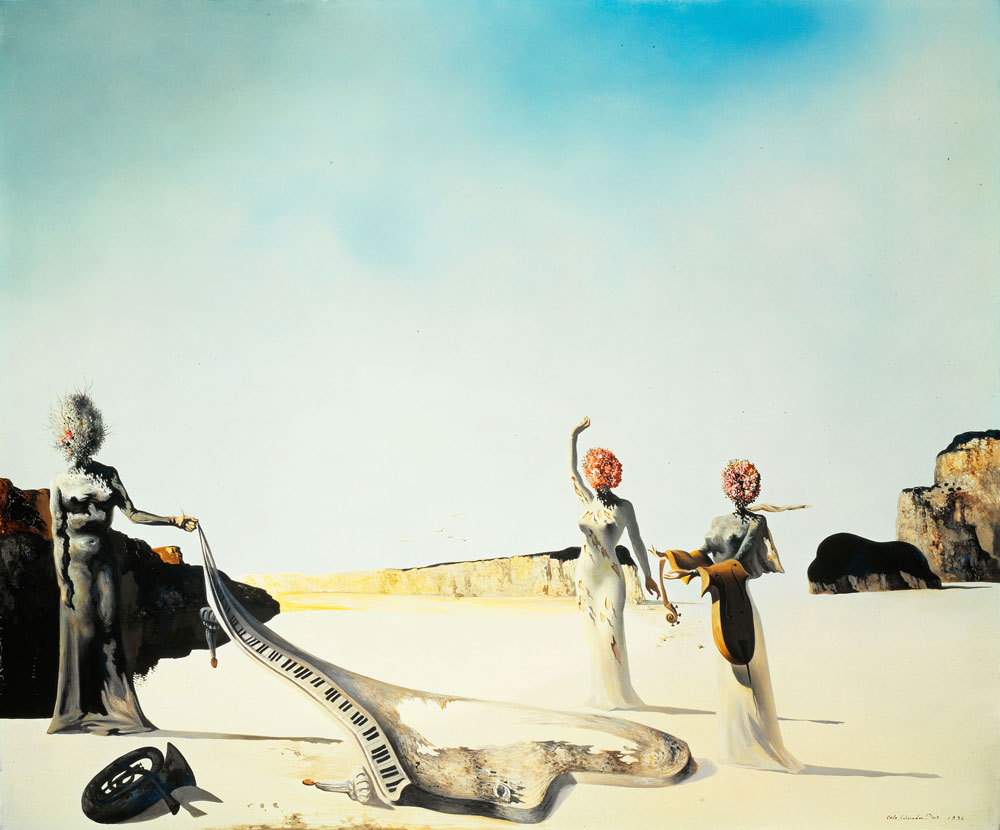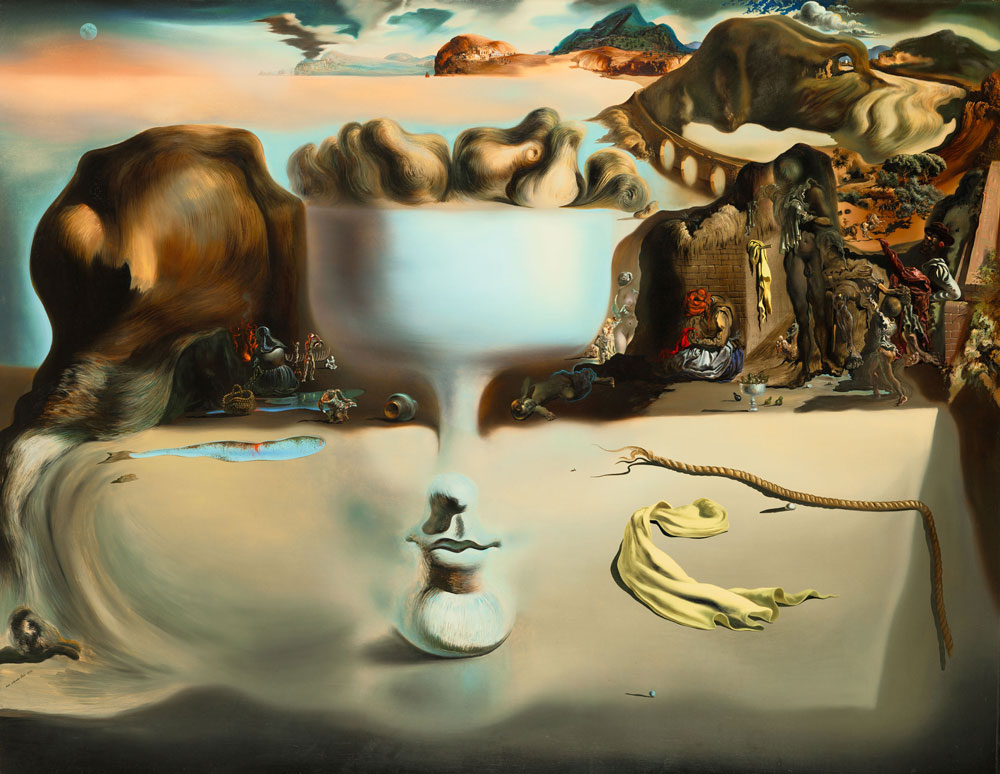
Dreams stand alone in their mystery and fascination. What do they mean? How can they be both sensationally beautiful and completely bizarre? We even wonder why we dream at all. In the 300,000 years “modern” humans have inhabited the earth, no one’s answered any of these questions. In the hands of artists however, dreams become places of exploration where visions of the unconscious mind inspire the creative imagination.
Few artists have exploited the synergy between dreams and the creative process more brilliantly than the incredible Spanish Surrealist, Salvador Dali. In its first exhibition devoted to his work, the Art Institute of Chicago has brought together an outstanding collection of paintings, photographs, drawings and Surrealist objects that reaffirm Dali’s lofty standing among critics and the public. Through the variety of pieces on display and the period the exhibition covers, Salvador Dali: The Image Disappears allows visitors to fully absorb the magnitude of Dali’s artistic talent. Adding to its appeal, the show’s focus on specific artistic techniques Dali used during that window of time forces us to more fully appreciate the artist’s formidable skill and his artistic cunning.
Covering a period when Dali was blazing his own path in the world of Surrealist art, the 1930’s, Salvador Dali: The Image Disappears profiles works that highlight approaches he used to alter the way we envision the world and contemplate our perceptions of reality. Everything in his compositions may be recognizable, but never are they conventional. The ways people and objects relate to one another hang in the realm of the absurd or the impossible or in the sphere of dreams. An overriding mood defines each painting and the spell it casts can prove entirely transfixing. Often telegraphed through the painting’s background or landscape, it makes a powerful initial declaration and an irresistible invitation into the painting.

An apocalyptic pall weighs over Inventions of the Monsters. A very quiet painting to be so complex, it captures the foreboding anxieties that arise when anticipating catastrophe. Completed in 1937 as the building blocks of WWII were growing in Europe, the painting’s an expression of the tense unease of the times. Although when asked, Dali provided specific meanings for every figure in this haunting work, those explanations are not readily available to us today. We’re left to decipher their meanings for ourselves. It’s this freedom of subjective interpretation that makes this exhibition so delightfully rewarding. Despite the many visitors filling the two rooms housing the show, an unhurried calm grounds the space. Every painting becomes a phenomenon, a beautifully constructed lure that won’t release its catch until it’s extracted every ounce of wonder from its enchanted victims.
Marked by economic anguish around the globe and the rise of Fascism in Old World, the 30s were a grave time. The timbre of the era may have influenced why many of the exhibition’s paintings seem to probe a reservoir of tortured angst. Soft Construction with Boiled Beans (Premonition of Civil War), gruesome in its depiction of a body tearing itself apart, still possesses a defiant and radiant beauty. It’s a stark departure from the playful whimsy of Mae West’s Face May Be Used as a Surrealist Apartment, where Dali brilliantly transformed the furnishings of modern life into the features of the actress’s face.

“Begin by learning to draw and paint like the old masters”, Dali once said. “After that, you can do as you like; everyone will respect you.” His paintings and the way people continue to react to them prove how correct he was in that pronouncement. Large and richly painted, most the works in the exhibition are lavish in their beauty and carry the imposing gravitas of the “old masters” he recalls. In Apparition of a Face and Fruit Dish on a Beach, the immediacy and power of the painting’s visual splendor is striking and undeniable. Considered one of Dali’s finest works, it embodies what the show’s title suggests. The more you gaze into it, the more it reveals. Images begin to appear that at first weren’t there. Objects become more than one thing. An overturned urn is also an eye and a mountain range morphs into a dog in profile. At once sublimely serene and surging with energy, it keeps the eye in constant search; making new discoveries with every sweep of the canvas. The same can be said for the entire exhibition. Each glimpse into the small swipe of Dali’s output during this single decade is a peek into treasure; making the show a pleasure well worth repeating.
Salvador Dali: The Image Disappears
Through June 12, 2023
Art Institute of Chicago
Modern Wing
159 W. Monroe
Chicago, IL 60603